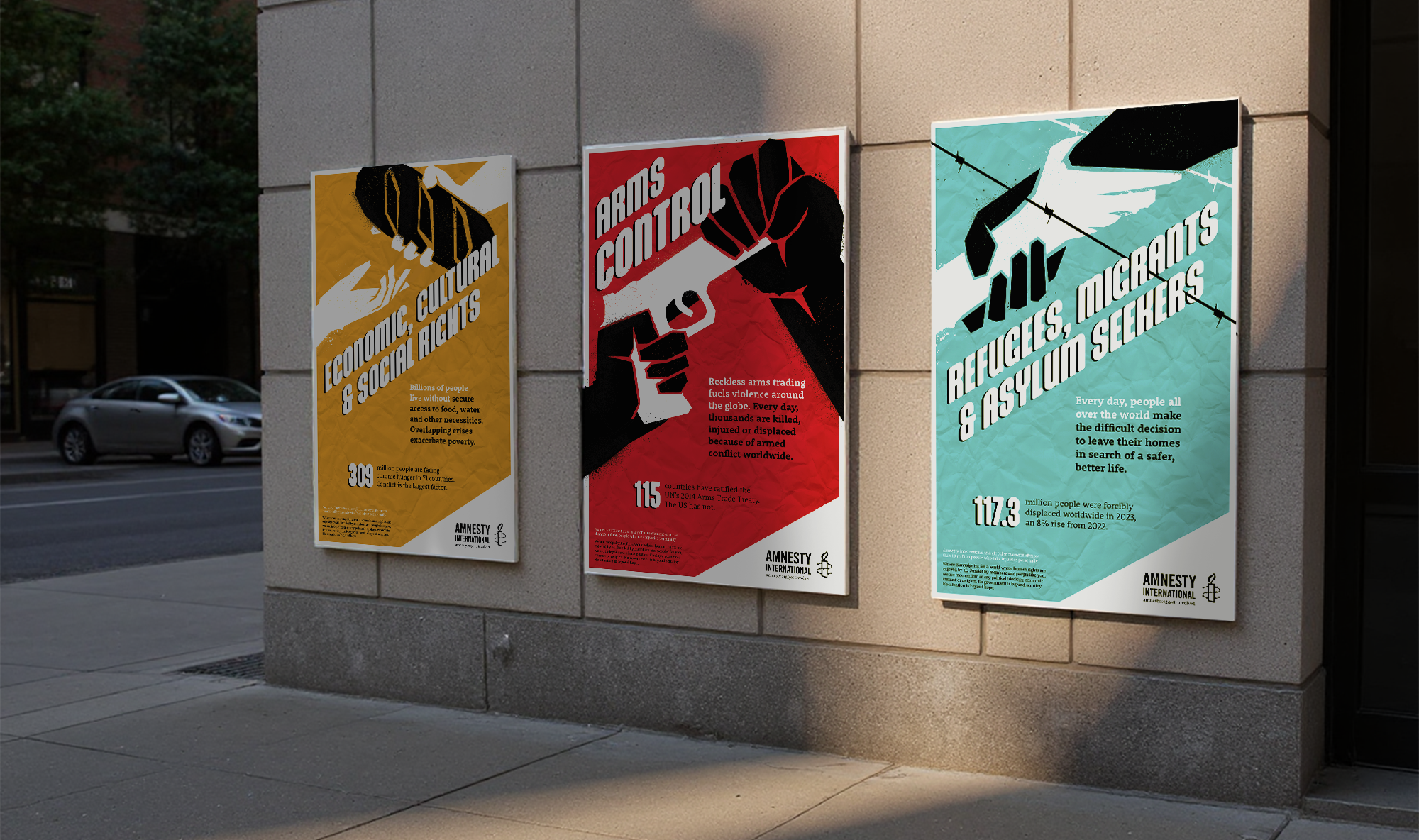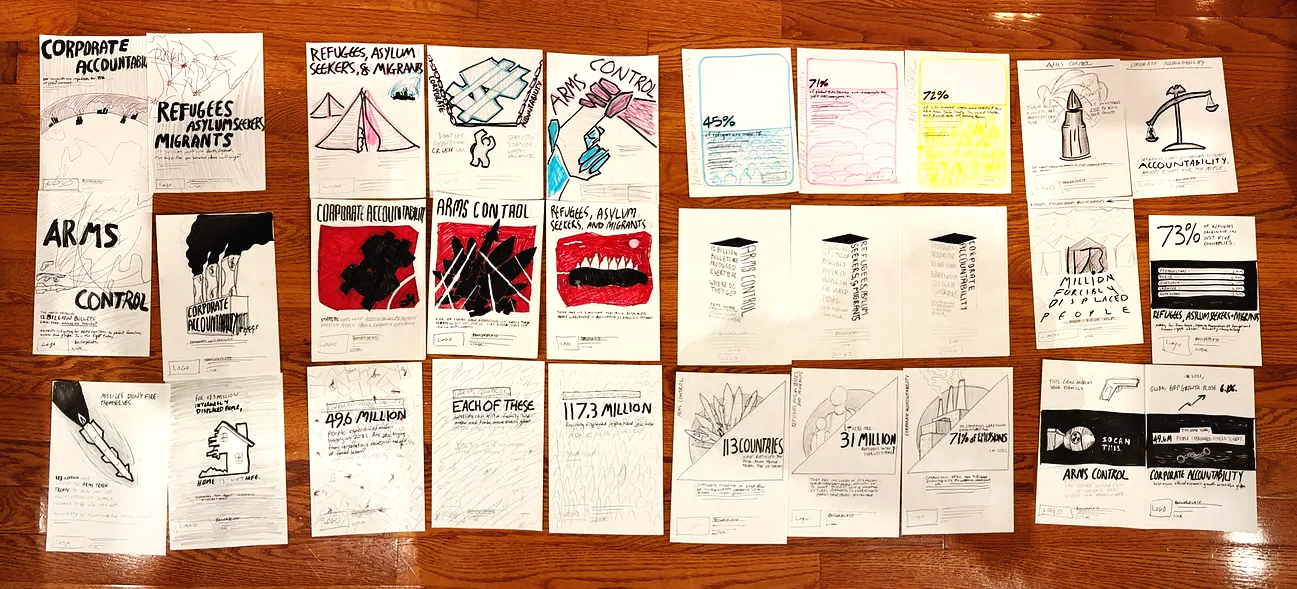
Using Style to Communicate
My approach began mimicking stencil protest art, which helped to communicate quickly that this poster was about political advocacy. However, I had no first-hand experience with graffiti.
To mimic spray paint more convincingly, I needed to understand how spray paint behaved. Fortunately, my position as a design lab assistant allowed me to use a spray booth to test it
for myself.
An expert at the lab told me political stencil art is often done hastily — someone slashes a piece of used cardboard with whatever knife they have, throws it up on a wall, and sprays over it. We had all the tools, so that’s what I did.

I learned that cardboard stencils often create a soft edge, and that spray paint can be dry and faded or dense and drippy, depending on paint quality, distance to the wall, and time spent focusing on one spot.
There’s an emotion to it as well; a sort of hasty anger hidden beneath a rushed creativity. The way you wave the paint, the force of it coming out, and the randomness of the splatter all lend to a sense of both fun and desperation. The possibility of paint dripping adds a potential for surprise.







